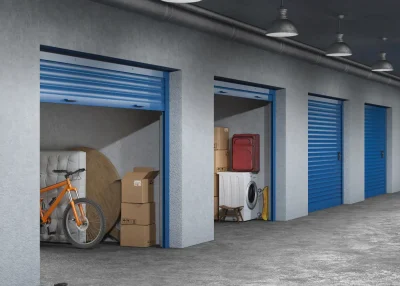
As technology continues to advance, homeowners are increasingly turning to home automation systems to enhance the security and convenience of their properties. One vital aspect of home security is monitoring the driveway, and integrating driveway alarms with home automation systems is an effective way to achieve this. By integrating these systems, homeowners can receive real-time alerts and control various security features remotely. In this article, we will explore the steps involved in integrating driveway alarms with home automation systems, providing you with a comprehensive guide to enhance your home security.
1. Select Compatible Home Automation System
To integrate driveway alarms with a home automation system, ensure that the home automation system you have or plan to install is compatible with third-party devices. Popular home automation systems such as Amazon Alexa, Google Assistant, and Apple HomeKit often support integration with various security devices. Check the manufacturer’s specifications and documentation to confirm compatibility.
2. Establish Connectivity
To integrate the driveway alarm with the home automation system, establish the necessary connectivity. This typically involves connecting the driveway alarm receiver to the home automation hub or compatible device. Depending on the specific products and systems, this connection may be established via Wi-Fi, Bluetooth, or a wired connection.
3. Configure Notifications and Alerts
Once the connectivity is established, configure the notifications and alerts to ensure you receive real-time updates regarding any detected activity in your driveway. Depending on your home automation system, you can typically customize the type of notifications, such as push notifications on your smartphone, emails, or text messages.
4. Automate Responses and Actions
To maximize the effectiveness of your integrated system, explore automation options that allow your home automation system to respond automatically to driveway alarms. For example, you can program your system to turn on specific lights or activate security cameras when the driveway alarm is triggered. This automation helps deter potential intruders and enhances overall security.
5. Test and Troubleshoot
After completing the integration, thoroughly test the system to ensure proper functionality. Test the sensor’s detection capabilities, the reliability of the alerts, and the automation responses. If any issues arise, consult the manufacturer’s documentation, online forums, or contact customer support for troubleshooting assistance.
6. Consider Additional Sensors and Integration
While integrating the driveway alarm with your home automation system, consider adding additional sensors for a more comprehensive security setup. For example, you can integrate outdoor motion sensors, security cameras, or gate sensors with your driveway alarm system. This integration will provide a more holistic approach to monitoring and securing your property.
7. Implement Geofencing Features
Leverage the geofencing capabilities of your home automation system to enhance the functionality of your integrated setup. Geofencing allows you to create virtual boundaries around your property and trigger specific actions based on your location. For instance, you can configure the system to automatically disarm the driveway alarm when you arrive home and arm it when you leave.
8. Integrate with Smart Lighting
Integrating your driveway alarm with smart lighting systems can further improve security and visibility. When the driveway alarm detects movement, you can program the smart lights to illuminate the driveway, discouraging potential intruders. This integration can also enhance convenience by automatically turning on pathway lights when you approach your home.
9. Explore Integration with Voice Commands
If your home automation system supports voice commands, consider integrating your driveway alarm for hands-free control. Using voice commands through devices like Amazon Echo or Google Home, you can arm or disarm the driveway alarm, check its status, or receive live updates simply by speaking a command.
10. Implement Redundancy and Backup Systems
To ensure continuous functionality and reliability, it’s important to have redundancy and backup systems in place. Consider incorporating backup power supplies or battery backups for both the driveway alarm and the home automation system. This way, even in the event of a power outage or system failure, your security system will remain operational.
12. Integrate with Video Doorbells and Intercom Systems
To enhance your security and communication capabilities, consider integrating your driveway alarm with video doorbells and intercom systems. When someone approaches your driveway, the driveway alarm can trigger the video doorbell, allowing you to see and communicate with the person remotely. This integration adds an extra layer of convenience and security by providing visual verification and the ability to interact with visitors without physically being present.
13. Set Up Scheduled Disarming
To prevent unnecessary alarms and notifications, especially during periods when you expect regular activity in your driveway, such as daily deliveries or family members returning home from work or school, set up scheduled disarming. Utilize the scheduling features of your home automation system to automatically disarm the driveway alarm during specific time windows. This ensures that you only receive alerts when unexpected activity occurs, reducing false alarms and minimizing disruptions.
14. Enable Integration with Mobile Apps and Remote Access
Take advantage of the mobile apps and remote access features provided by your home automation system to integrate with the driveway alarm. This allows you to monitor and control the driveway alarm from anywhere using your smartphone or other mobile devices. With remote access, you can receive instant notifications, view live camera feeds, and even arm or disarm the driveway alarm remotely, providing you with flexibility and peace of mind even when you’re away from home.
By integrating driveway alarms with video doorbells and intercom systems, setting up scheduled disarming, and enabling integration with mobile apps and remote access, you can further enhance the functionality, convenience, and customization options of your integrated security system. These additional points expand your ability to communicate with visitors, prevent unnecessary alerts during expected driveway activity, and maintain control of your security system while on the go. As technology continues to evolve, it’s essential to explore and utilize the various integration possibilities available to maximize the effectiveness and usability of your home automation system and driveway alarm. Invest time in setting up these additional features to create a comprehensive and tailored security solution that meets your specific needs and preferences.








